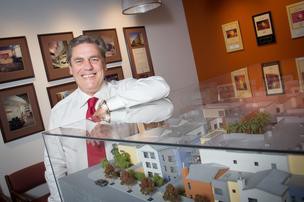
San Francisco Business Times’ Cory Weinberg explains that one of the first is a 136-unit multifamily project developed by Holliday Development in Oakland. The modular construction will save developers up to 30 percent of the costs, because 80 percent of the job will be done off-site at a factory in Sacramento.
As factory-building pros and aficionados know, the modules/components will be trucked to San Francisco and crane-lifted into place. That speeds up the progress of the project. Modular building can also mean that the return on investment is accelerated, because of the faster start-to-finish time line.
“Modular has been tantalizing and teasing people for years,” said developer Rick Holliday. “It needs to be done at scale, which is what we’re doing. If we’re doing a repeat job a year from now, that’s an indicator that this works.“
Holliday Development and three additional development companies plan to start modular projects of at least 70 units each in San Francisco, Oakland, Emeryville, and San Leandro in the next year.
The story in the Business Times points out that “the potential cost savings that could be taken from more efficient labor and pre-bought materials are sorely needed in a market where it’s increasingly expensive to build.”
“What caused us to take the plunge is that the cost of housing has become so ridiculously high,” said Larry Pace, principal of Cannon Constructors, the general contractor on Holliday’s project and other modular projects in the Bay Area.
As in most new and innovative ideas, there is always some skepticism. Will capital follow this trend?
However, many developers and builders feel that it is time for a change. Patrick Kennedy, owner of Panoramic Interests said,“It’s remarkable to me how little innovation has taken place in wood-frame construction. Balloon framing was invented in Chicago in 1833, and it hasn’t changed much in the intervening 200 years.”
Kennedy feels that if meaningful progress is going to be made in providing affordable housing for the middle class, then cities and developers need to experiment with new building prototypes. ##
(Editor’s note: This could make a nice book end to Sandra Lane’s earlier report on rising rental rates and the opportunities for factory home builders, linked here.)
(Photo Larry Pace, partner in Cannon Constructors. Photo Credit: Todd Johnson, Biz Journals)

